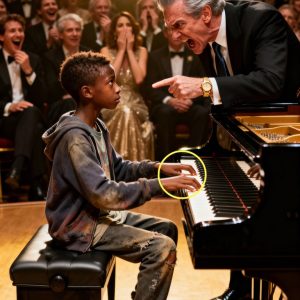When Ellen visits her late husband Paul’s grave seeking peace, she notices something strange—a tiny pair of blue sneakers placed on his headstone. Thinking it was a mistake, she moves them aside and leaves her lilies. But with each visit, more children’s shoes appear: red rain boots, green sneakers, tiny sandals. It no longer feels random—it feels deliberate. The shoes keep multiplying, haunting her with questions she can’t answer.
One cold morning, Ellen finally catches the person responsible. A woman kneels by the grave, carefully setting down another small pair of shoes. Ellen storms forward, ready to confront her, but freezes when she sees her face. It’s Maya—Paul’s former secretary, the woman who suddenly quit years ago. The shock hits hard. Maya looks broken, her eyes carrying the same grief Ellen has lived with for years.
When Ellen demands an explanation, Maya pulls a worn photograph from her coat—Paul holding a baby boy. “His name is Oliver,” Maya whispers. “He’s Paul’s son.” The truth crushes Ellen. Her husband, the man she mourned so deeply, had lived a secret life. Maya explains through tears that little Oliver asks about his father constantly, and that she brings his old shoes to the grave so he can “give them to Daddy.”
Ellen wants to scream, but instead, she feels something shift. Looking at the line of shoes, her anger melts into something else—understanding. “You don’t have to stop,” she says softly. “If it helps him, let him.” Maya cries, thanking her. Together, they place the photograph on Paul’s grave.
From that day on, Ellen no longer dreaded visiting. The shoes became symbols of connection, not betrayal—a bridge between two grieving women and a child who still believed in love. And in that unexpected bond, Ellen found a new kind of family, born not from perfection, but from forgiveness.





